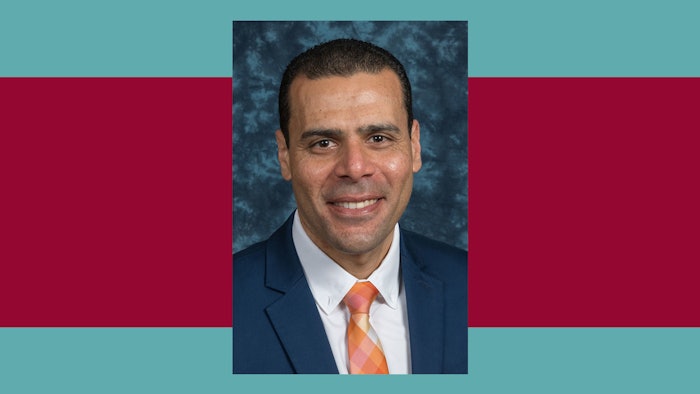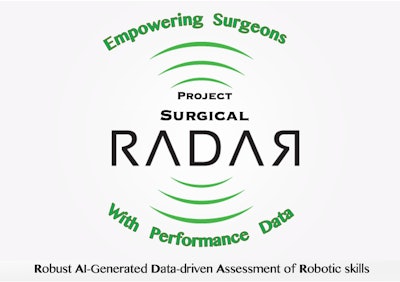Put this project on your RADAR
A new technology aims to help improve surgical performance.

For surgeons, finding ways to improve their performance is the key to getting to—and staying at—the top of their game. Every surgeon instinctively works on their performance using metrics, such as those for estimated blood loss, surgical margins and patients’ outcomes.
Project Surgical RADAR will use the latest in simulation technology to help urological surgeons do just that. Inspired by the American College of Surgeons’ Surgical Metrics Project, Project Surgical RADAR, which stands for Robust AI-generated Data-driven Assessment of Robotic skills, uses a realistic physical platform that simulates a very complex part of a radical prostatectomy procedure that involves sparing the nerves responsible for preserving erectile function.
Ahmed Ghazi, MD, FEBU, MHPE, associate professor of urology and director of the Simulation Innovation Laboratory at the University of Rochester School of Medicine and Dentistry in Rochester, New York, said that the procedure was chosen because it is one of the more complicated areas of prostate surgery.
“This is [a surgical procedure] where you have to preserve the neurovascular bundle with minimal trauma, while at the same time avoiding violation of the prostate capsule,” he said. “It’s like you’re delicately peeling something off the prostate, but you’re not allowed to tear into the prostate because that would result in positive cancer margins. So you’re walking a tightrope where, if you fall on one side, you’ll get positive margins, which is unacceptable in cancer surgeries, and [if you fall] on the other side, you will spare fewer nerves and cause more trauma to the nerves, which will delay functional recovery.”
Dr. Ghazi said the goal of the Project Surgical RADAR simulators, located at booth 2517 in the Science and Technology Hall, is to provide surgeons with an overview of their skills using multimodal synchronous inputs including video from the surgical endoscope, sensors embedded in the simulation model, pupil data from eye trackers within the robotic console and kinematic data from the movement of the robot itself.
Urologists with robot-assisted experience (even if limited) who register for the event ahead of time or stop by the booth can spend 30 minutes on the realistic model to get a full evaluation of their performance on the project website (surgicalradar.com). Dr. Ghazi stressed that the evaluation is strictly aimed at improving surgical performance and not assessment by providing urologists with unparalleled insights into their skills. Furthermore, all data will be anonymized and only accessible to the participant.
“Our slogan is, ‘Empowering surgeons with their performance data,’” he said. “We’re sharing the data with participants so that they can discover areas where performance can be improved but also areas where they excel. Unfortunately, performance assessment has a bad reputation in surgery as it is seen by surgeons as a means by which to categorize them into adequate or inadequate. Project Surgical RADAR is not a form of assessment but an ongoing evaluation that is now considered an essential component in many high-stakes industries. We want to correct the misconception that surgeons have with evaluating their performance. This is actually a benefit for them rather than being something that is used against them.”
Artificial intelligence will be used to analyze the wealth of data collected from each simulation. Therefore, the more surgeons who participate, the more data that will be fed into the algorithm to improve its accuracy, and that, Dr. Ghazi said, will lead to more long-term improvements for the greater good.
“Our ultimate goal is not to keep their data to ourselves but to encourage more surgeons to share their performance data, which will be used to develop research methods for the greater benefit [of the medical community] through a consortium of data scientists, engineers and surgeon educators,” he said.
Visit AUA2022 Daily News Online for more articles.